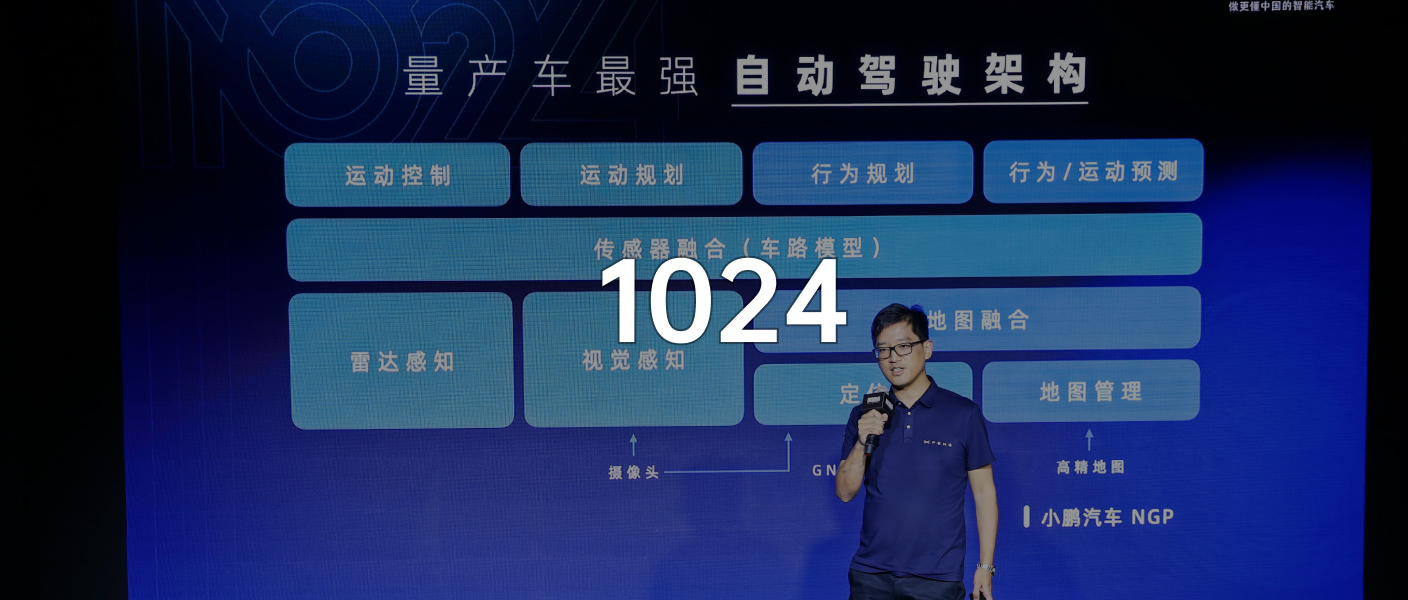English Markdown Text
Today, Xpeng Motors held the 2nd annual 1024 Intelligent Day at the South China University of Technology.
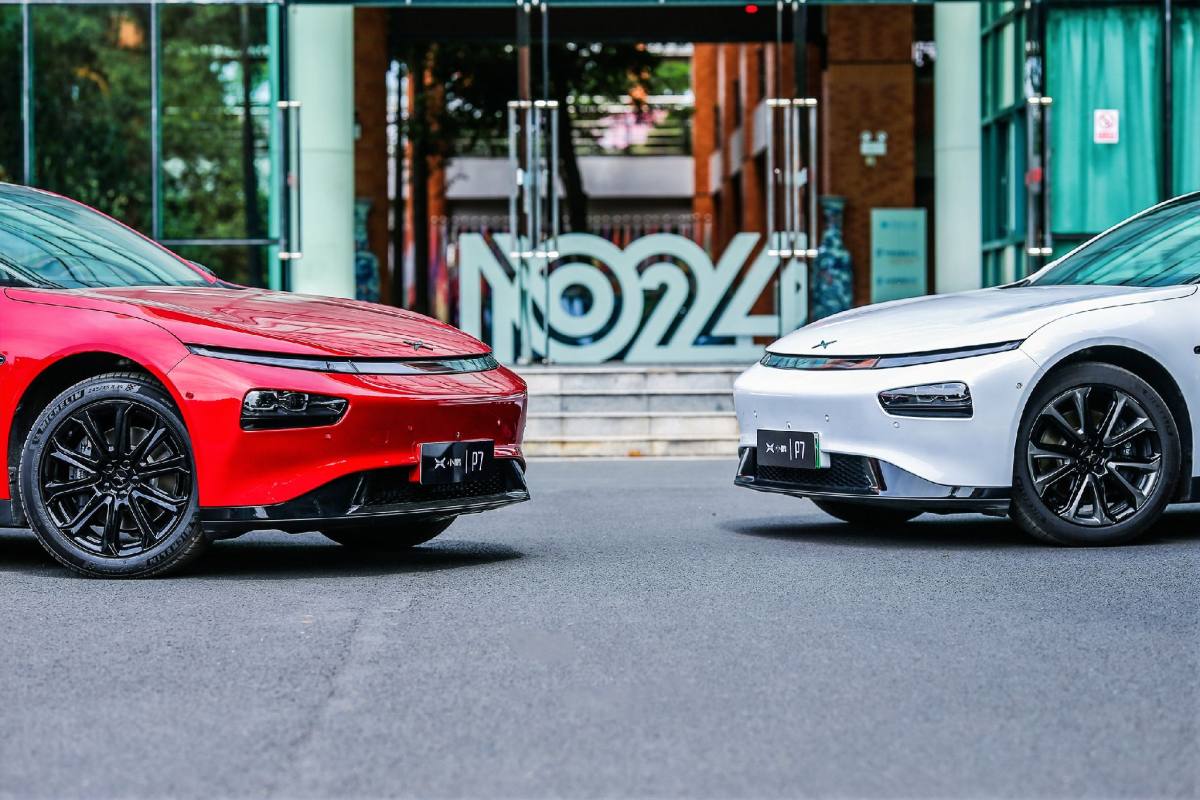
Three speakers took to the stage within the limited hour and a half period. They were Vice President of Xpeng Motors, Ji Yu; Vice President of Autonomous Driving, Dr. Wu Xinzhou; and Chairman and CEO of Xpeng Motors, He XPeng.
The first two were responsible for the core technologies of Xmart OS and Xpilot, while the last made the final decisions on Xpeng Motors’ core development direction. These three directly determine the final direction of Xpeng Motors’ intelligent vehicles.
After sharing their technology and ideas, they expressed their enthusiasm and desire for Xpeng Motors future. As a car owner, I personally felt very proud and happy.
Milestones for Xmart OS
Xmart OS is the code name for Xpeng Motors’ car computer operating system. In short, it is the system installed in the car or cockpit.
At the beginning of the PPT presentation, Ji Yu showed how the navigation, music, and voice recognition usage rates are as high as 93.2%.
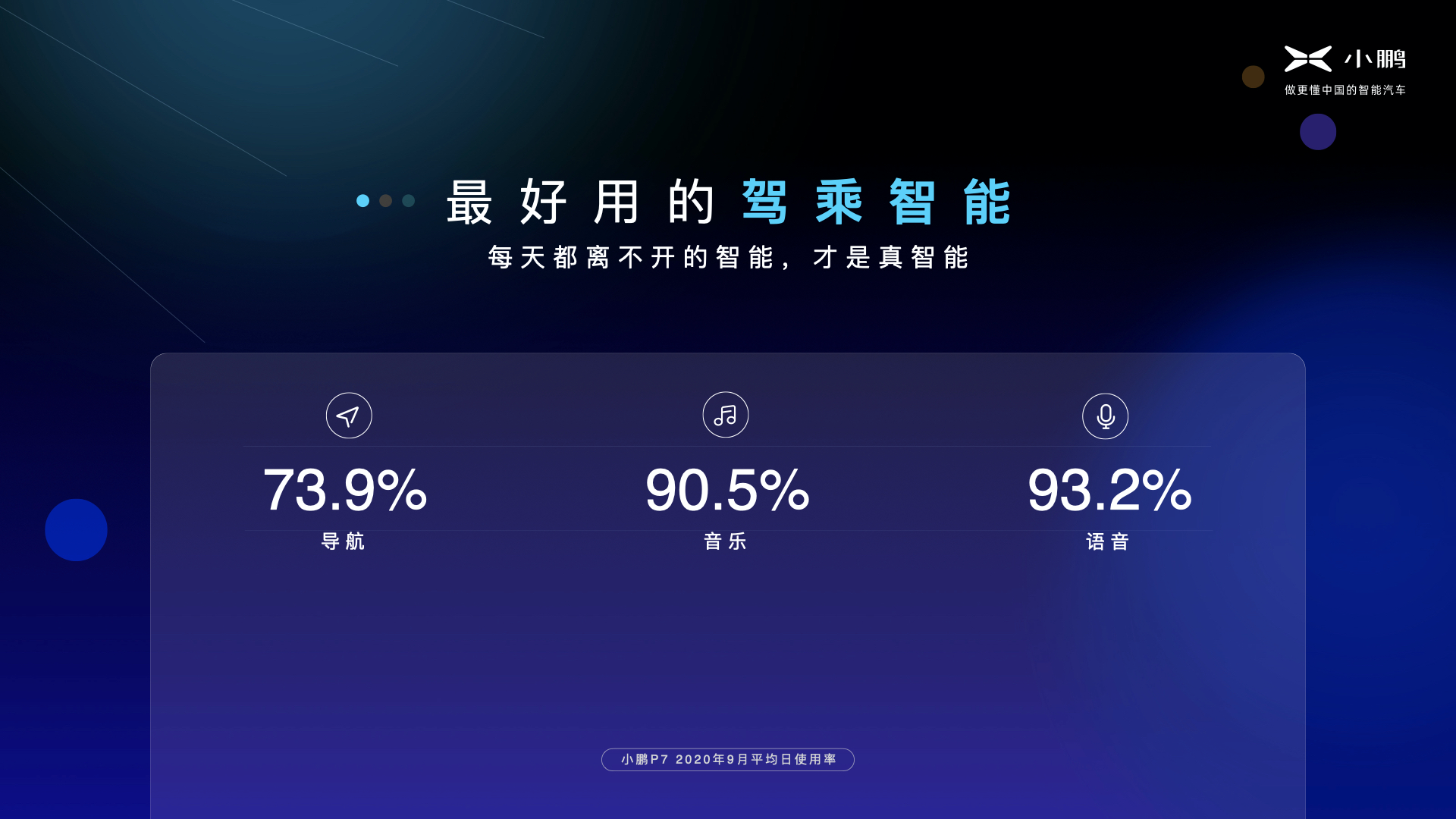
However, we believe that this usage rate will continue to climb and even reach 100%.
Because for Xmart OS, the nature of voice recognition has undergone a huge change.
On October 22, Xpeng Motors officially launched “Full Scene Voice Function” in version V2.1.0 software update. Everyone present at the event unanimously praised it, even going as far as giving it the label of “the best assistant driving tool on the market”, which could be considered a violation of advertising laws.
On our official webpage, up to 92% of users are impressed or meet expectations with the new function.
Without further ado, let’s take a look at the actual demonstration in the video above.
I would like to discuss a question, why can Xpeng Motors achieve this when other new car manufacturers cannot? At the same time, I will answer the question of why the nature of voice recognition has undergone a huge change.
In one of Ji Yu’s PPT slides, there is an impressive image.

In this PPT, voice recognition was not presented as a feature – instead it was placed in the “In-car Interaction” category.Vice President of XPeng Motors’ Internet Center, Liu Yilin Rocky, emphasized repeatedly in the comments section of topic #42 on the official website that “XPeng Motors’ internal definition of this product is a fully voice-operated in-car operating system, and full-scene voice is the key ability and means to achieve this.”
“The difference in this way of thinking has created a huge breakthrough for XPeng Motors in terms of user experience.”
If voice is only treated as a function to be created, it will only serve certain scenarios with purposefulness, much like the process of pushing back from the end of the branches to the center of the mind map. When voice becomes a means of interaction, it feels more like radiating from the center to the end of the branches.
“It’s difficult for the former to be as comprehensive as the latter,” just like in the video demonstration of using voice control to select the terms of use and acknowledge the risks included in it.
Moreover, when voice becomes a means of interaction, touch interaction becomes its comparative object, which raises new issues of efficiency and success rate that need to be addressed.
For example, taking the “I have read and acknowledge the above risks” clause in the terms of use that can be selected with voice control, if the requirement is to recite the entire sentence before selecting, it is definitely inferior to touch control in terms of efficiency. Therefore, XPeng Motors’ engineers optimized it to only require a few words to be spoken or even skip to select, which, in terms of efficiency, even surpassed touch control. “If you don’t think about the problem in this direction, it may be difficult to find these new breakthroughs.”
The XPeng engineers also discovered the unique advantage of voice interaction. Compared with touch interaction, voice control has no secondary, tertiary, or even quaternary menus. All functions are flattened on one level, which “greatly improves interaction efficiency” and allows more precise control of the vehicle’s hardware through voice control, such as the degree of window opening and map zoom level.
Seeing the overwhelming positive reviews on the market, I sincerely feel happy for the XPeng car-machine team. “Compared to automatic assisted driving, the road to intelligent cabin is more difficult, and this milestone has not come easily.”
“On the one hand, no car manufacturer’s car-machine or cabin has particularly outstanding achievements in the intelligentization level yet. The differences between everyone are only 63 points and 65 points, and most people are making slight optimizations based on the current functions.”
“There is no product in the industry that has scored 80 to show everyone the way. Everyone lacks imagination, and no one knows what the ‘intelligence’ of the car-machine and cabin should feel like.”
“On the other hand, precisely because no car manufacturer has taken this path, users’ thinking is also closed, and the responsibility of educating users and breaking their inherent cognition falls on XPeng Motors as the leader.”Do you think the Xmart OS 2.0 just ends here? XPeng Motors has also built an open hardware ecosystem for vehicle status, data and capabilities that can be accessed by third parties.
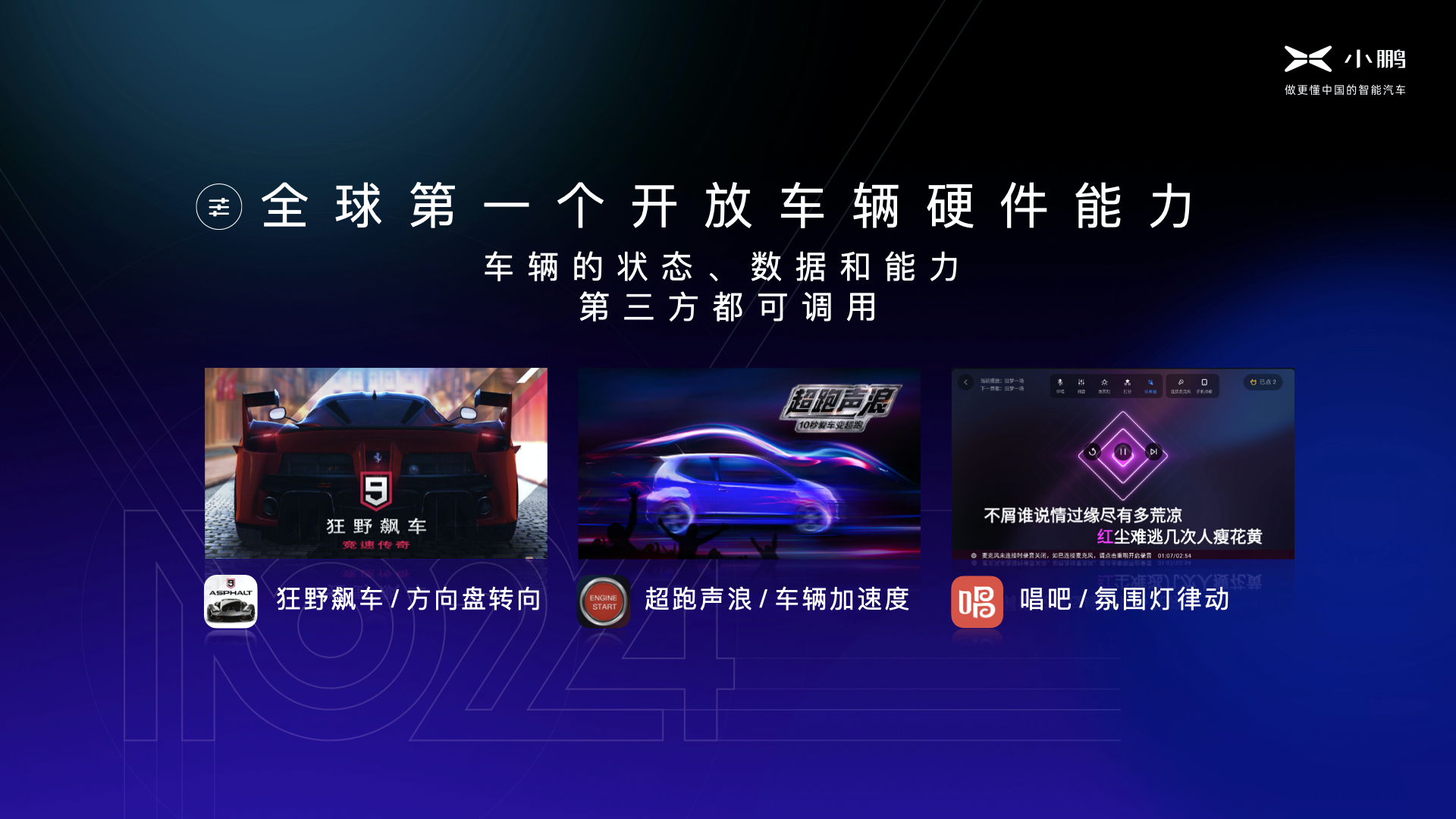
Due to length and time constraints, I won’t go into detail here. I’ll just give a few examples. By opening up the steering wheel turn angle data, wild racing games can be controlled by the direction of the steering wheel. By opening up the throttle pedal opening signal and vehicle speed signal, high-performance sports cars can have more realistic sound effects.
Although it seems relatively flashy in terms of functionality, this is just a beginning for XPeng in terms of hardware and data openness. The imagination space for the future can refer to the development path of mobile apps.
Xpilot 3.0 XPeng’s Ambitious Plan
Under Tesla’s strong leadership, the development path of self-driving assistance has become much clearer for the new forces in car making.
Tesla has officially launched the beta version of FSD in North America. Nio has also pushed out the NOP function at the end of September. Although XPeng’s autonomous driving system was updated only on October 22nd, and it is still only the XP 2.5 version, this does not prevent me from reaching the conclusion that XPeng’s autonomous driving team has a clear, determined and efficient research and development path.
Founded in 2014, XPeng Motors has become the world’s second mass production car manufacturer to independently develop full-stack technology from visual perception to sensor fusion, planning, positioning, decision-making, and control in under six years, and has achieved closed-loop capabilities from data collection to algorithm optimization.


Although XPeng has taken care of the autonomous driving-related work, from the NGP performance that has been close to landing, XPeng’s R&D efficiency is exceptionally high, and the confidence in building China’s strongest assisted driving system with top-notch hardware and full-stack technology abounds.
Although Tesla is ahead of XPeng in terms of technical strength, in terms of actual user experience, XPeng’s NGP has already surpassed Tesla’s NoA.
Comparison video
At the press conference, Dr. Wu Xinzhou mentioned four differences between Chinese and American roads and listed some of the problems that NGP has already solved under Chinese road conditions:
- Complex road design
- Numerous traffic signs
- Dense construction sections
- Mixed traffic participants
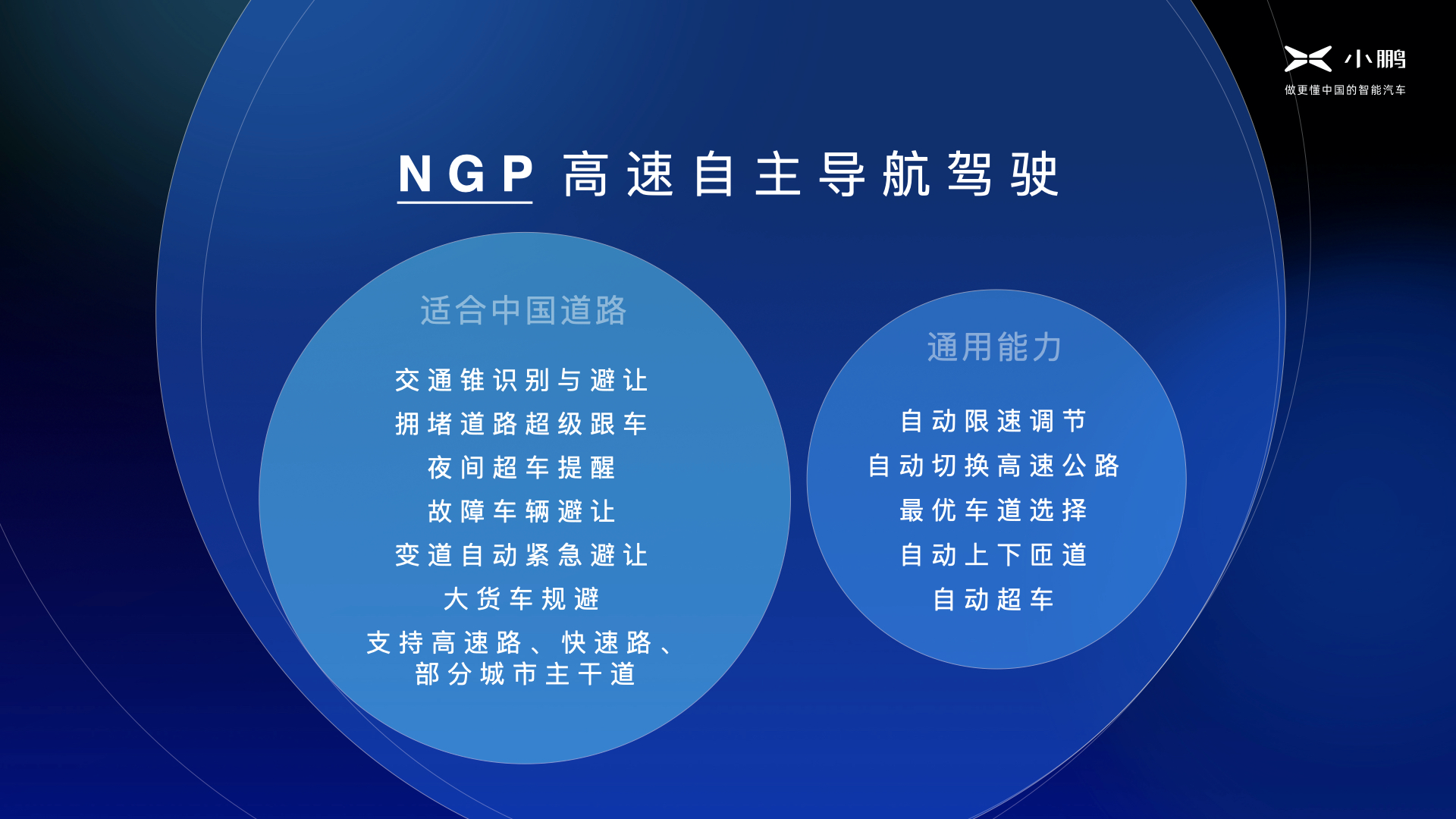
And He XPeng also released the Flag of achieving the full NGP journey from Guangzhou to Beijing in Q1 2021 at the end of the event.

As for how to judge the performance, Wu Xinzhou released three indicators: the highest scene coverage, the lowest manual takeover rate, and the highest lane change efficiency.

When this PPT was released, Wu Xinzhou also joked on the spot that He XPeng could use these three indicators as his KPI.
After seeing these three indicators, I exclaimed on the spot that XPeng is indeed building NGP with user experience in mind. The most influential factors in actual use are usage scope, takeover times, and passing efficiency. China’s strongest navigation assistant is promising!
Finally, let’s talk about automatic parking.
XPeng’s visual fusion perception automatic parking has received high praise in the industry, and it also ranks first in our 42Mark assisted driving evaluation system. However, XPeng is not satisfied with this.
Based on the Xpilot 3.0 hardware of P7, XPeng once again raised the industry’s upper limit.
Next, XPeng will use the assisted driving perception cameras around P7 to achieve automatic parking. Compared with the panoramic camera, the visual range is wider, and the benefit is that the system can detect the parking space that can be parked in advance even if the vehicle has not yet entered the parking space.
Video
In addition, based on the system’s strong recognition ability, comprehensive spatial construction ability, and positioning ability, the vehicle only needs to drive through the parking lot once, and the system can draw a very detailed parking space information, gradually completing the iterative upgrade from “memory parking” to “autonomous parking”.
“From building the strongest NGP in China to constantly refreshing the industry’s upper limit in automatic parking ability, we can see that XPeng not only has sufficient technical strength in assisted driving but also has a product manager who has innovative ideas and a good understanding of Chinese user needs.”
The “smart” tag is finally highlighted
Some time ago, when I was having dinner with friends, we talked about the three new forces in car making, NIO, Ideal, and XPeng. When we talked about the characteristics of the first two companies, everyone’s opinions were relatively similar.
NIO’s heaviest tag is “top service” and “ultimate luxury”, and Ideal’s heaviest tag is “no mileage anxiety” and “perfect nanny car”. But when it comes to XPeng, everyone is stunned. What is XPeng’s most dazzling tag?Actually, as early as 2018 when XPeng Motors launched its first model G3, it repeatedly emphasized the “smart” label. Referring to the prospectus when XPeng Motors went public, the word “Smart” appeared as much as 346 times.
Obviously, before this year’s October 24th, XPeng Motors’ products were temporarily difficult to be associated with this label in people’s hearts. However, on this year’s 1024 Intelligent Day, XPeng Motors’ two technical leaders, Ji Yu and Wu Xinzhou, took out their respective pens and drew dazzling borders for the “smart” label.
Intelligence is something that is difficult to describe yet very valuable, but in this era of “smart” flooding, people have become somewhat numb to it.
At last year’s 1024 Intelligent Day, XPeng’s focus was actually on Xmart OS and Xpilot, but many people felt that XPeng was making promises. Fortunately, within the expected timeframe that everyone was still holding onto, XPeng unveiled stunning products.
How should I put it? XPeng Motors’ 1024 Intelligent Day has begun to have a taste of Tesla’s Autonomous Driving Day.
This article is a translation by ChatGPT of a Chinese report from 42HOW. If you have any questions about it, please email bd@42how.com.
